| Listing 1 - 8 of 8 |
Sort by
|
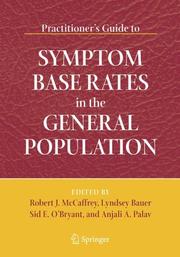
ISBN: 1280623896 9786610623891 0387267581 0387267573 Year: 2006 Publisher: New York : Springer,
Abstract | Keywords | Export | Availability | Bookmark
 Loading...
Loading...Choose an application
- Reference Manager
- EndNote
- RefWorks (Direct export to RefWorks)
Provides a compilation of the symptoms reported among the control groups from studies involving neuropsychologically impaired individuals and those with various medical and psychiatric conditions. This book covers the base rate of a particular symptom in the nonpatient/general population.
Psychology. --- Neuropsychology. --- Neurophysiology --- Psychophysiology --- Behavioral sciences --- Mental philosophy --- Mind --- Science, Mental --- Human biology --- Philosophy --- Soul --- Mental health --- Symptoms. --- Diagnosis. --- Diseases --- Examinations, Medical (Diagnosis) --- Medical diagnosis --- Medical examinations (Diagnosis) --- Medical tests (Diagnosis) --- Clinical medicine --- Prognosis --- Symptoms --- Clinical signs --- Disease symptoms --- Semiology --- Semiology (Medicine) --- Signs, Clinical --- Signs and symptoms --- Symptomatology --- Symptomology --- Diagnosis --- Testing --- Psychology, clinical. --- Clinical psychology. --- Psychiatry --- Psychology, Applied --- Psychological tests
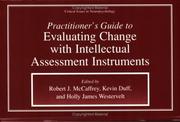
ISBN: 0306464160 Year: 2000 Publisher: New York (N.Y.) : Kluwer academic/Plenum,
Abstract | Keywords | Export | Availability | Bookmark
 Loading...
Loading...Choose an application
- Reference Manager
- EndNote
- RefWorks (Direct export to RefWorks)
Intelligence Tests. --- Medische psychologie --- Neuropsychological Tests. --- Neuropsychological tests. --- Psychodiagnostics. --- neuropsychologie.
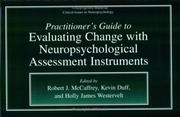
ISBN: 030646361X Year: 2000 Publisher: New York (N.Y.) : Kluwer academic/Plenum,
Abstract | Keywords | Export | Availability | Bookmark
 Loading...
Loading...Choose an application
- Reference Manager
- EndNote
- RefWorks (Direct export to RefWorks)
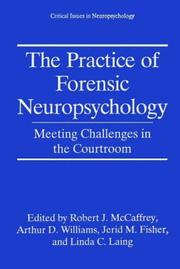
ISBN: 0306452561 Year: 1997 Publisher: New York (N.Y.): Plenum
Abstract | Keywords | Export | Availability | Bookmark
 Loading...
Loading...Choose an application
- Reference Manager
- EndNote
- RefWorks (Direct export to RefWorks)
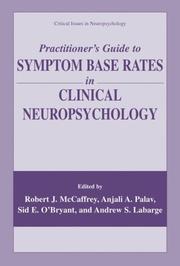
ISBN: 0306478293 Year: 2003 Publisher: New York (N.Y.): Kluwer Academic
Abstract | Keywords | Export | Availability | Bookmark
 Loading...
Loading...Choose an application
- Reference Manager
- EndNote
- RefWorks (Direct export to RefWorks)
Clinical neuropsychology --- Neuropsychological tests --- Psychodiagnostics
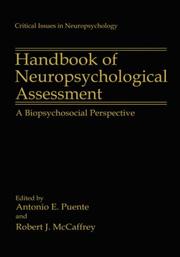
ISBN: 0306439409 Year: 1992 Publisher: New York (N.Y.) : Plenum press,
Abstract | Keywords | Export | Availability | Bookmark
 Loading...
Loading...Choose an application
- Reference Manager
- EndNote
- RefWorks (Direct export to RefWorks)
Clinical neuropsychology --- Neuropsychiatry --- Neuropsychological tests. --- Clinical neuropsychology. --- Neuropsychiatry. --- Neuropsychological Tests.
Book
ISBN: 9780387267586 Year: 2006 Publisher: New York NY Springer New York
Abstract | Keywords | Export | Availability | Bookmark
 Loading...
Loading...Choose an application
- Reference Manager
- EndNote
- RefWorks (Direct export to RefWorks)
SUMMARY Meehl and Rosen (1955) Wrst demonstrated the importance of base rates in psychologicalassessmentnearlyWvedecadesago. Theseauthorsstated, Thechief reasonforourignoranceofthebaseratesisnothingmoresubtlethanourfailureto computethem''(pg. 213). Researcherscontinuetoreportthatbaseratesarestill largelybeingignored(Duncan&Snow,1987;Gouvier,Hayes,&Smiroldo,1998). It isbecauseofthisgapintheliteraturethatthecurrentbookPractitioner'sGuideto SymptomBaseRatesintheGeneralPopulationandthepreviousbookPractitioner's GuidetoSymptomBaseRatesinClinicalNeuropsychology(McCaVreyetal. 2003) werecreated. Ifthediagnosticaccuracyofourclinicaldecision-makingprocessand ourtestinginstrumentsaretobeestimated,wemustcalculatethebaseratesofthe symptoms,disorders,anddiseasesweassessforonaregularbasis. Itishopedthatthepresentbookwillaidneuropsychologicalpractitionersand otherhealthcareprofessionalsintheevaluationofthepresentingcomplaintsoftheir patients. Baseratesareofutmostimportanceintheestimationofdiagnosticaccuracy ofneuropsychologicalandpsychologicalassessment,aswellasanyotherformof testing,aswellasintheinterviewanddiVerentialdiagnosticprocess. Itishopedthat thesetwovolumeswillencourageadditionalresearcherstoreportbaserateinfor- tion as well as detailed information regarding the population from which this informationwasobtained. Inordertoestimatetheaccuracyofourclinicaldi- noses/decisionsthataremadeonadailybasis,wemustunderstandtheimportanceof baserateinformationandmakeeveryattempttocollectandreportthisdata. Last, thecurrentintroductionismeanttoprovideabriefoverviewofbaseratesandtheir utilityinclinicalneuropsychology. Ifthereaderwishestogainmoredetailedund- standing regarding base rates s/he is referred to Practitioner's Guide to Symptom BaseRatesinClinical Neuropsychology(McCaVrey,Palav,O'Bryant,&Labarge, 2003)aswellasothersources(e. g. ,Gordon,1977;Gouvier1999,2001;Meehl& Rosen,1955). Key for Using Tables Gender: Males/Females Age: Mean (Standard Deviation); Range Race: Caucasian/African American/Hispanic/Asian Native American/Other Timeframe: timeframe of symptom report SAMPLE TABLE CHARACTERISTICS Schaughency, et al. (1994) n = 943 Diagnostic Criteria: Gender: 483/460 Age: 15 Race: Population Setting: community Nationality: New Zealand Other Sample Characteristics: Method of Reporting: self-report Timeframe: current 5 II / Control Groups: Adult COLLEGE STUDENTS Machulda, et al. (1998) Population Setting: college n = 141 undergraduates Diagnostic Criteria: Nationality: US Gender: 49/92 Other Sample Characteristics: Age: 20. 7 (18-22) Method of Reporting: self-report Race: 268/88/66/7/0/9 Timeframe: Symptom % Symptom % anxiety 87 headache 57 concentration difference 80 irritability 74 depression 71 sensitive to light 26 disordered sleep 41 sensitive to sound 16 dizziness 19 fatigue 83 Freeston, et al. (1996) Population Setting: university n = 583 undergraduates Diagnostic Criteria: Nationality: Canada Gender: 216/367 Other Sample Characteristics: Age: 22. 6 (4. 6) Method of Reporting: self-report Race: 268/88/66/7/0/9 Timeframe: Symptom % Symptom % difficulty concentrating or 16. 5 muscle tension, aches, or 17.
Psychology --- Neuropathology --- neuropsychologie
Digital
ISBN: 9780387267586 Year: 2006 Publisher: New York, NY Springer Science+Business Media, Inc
Abstract | Keywords | Export | Availability | Bookmark
 Loading...
Loading...Choose an application
- Reference Manager
- EndNote
- RefWorks (Direct export to RefWorks)
Psychology --- Neuropathology --- neuropsychologie
| Listing 1 - 8 of 8 |
Sort by
|

 Search
Search Feedback
Feedback About UniCat
About UniCat  Help
Help News
News